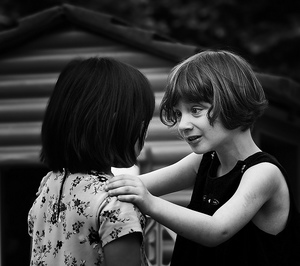All of us that have been dancing for a while will have enjoyed the moments where there is an interplay between lead and follow that we often refer to as a ‘conversation’.
Until very recently I never thought to question who was having the conversation – there are only two of us after all. But now I am experimenting with the idea that in these moments I am often listening – and the real conversation is often between the follower and the music.
But the key – I think – is that word ‘mostly’ – when she dances with the music she needs to know that I am there – that I have not abandoned her. There is a moment when I give everything over to her – and I remain as a stable engaged structure – but never should she feel lost – just playing with her own responses to the emotional landscape in isolation.
One of my wonderful teachers talks about the fact that the music knows nothing about dance, and our job as dancers is to introduce the music to dance. We take this role on as a couple – we accept the musical landscape and together we negotiate our response. It is natural that the focus of our relationship – the two dancers and the music – shifts in all possible combinations. Sometimes the music might suggest a walk, and the leader responds – he has listened and the conversation is between him and the powerful rhythm of the music. For a musical phrase the follower might just enjoy the result – and be walked. But then the focus changes – there is a wonderful series of complex tumbling notes that the follower responds to.
I think this role of the leader – to be always there – to always be dancing even in stillness – to never abandon her – to participate as the focus shifts again and again – is so important.
The skill is to jointly agree who has the focus, and to exchange our roles from leader and follower between the two dancers and the music so as to create a work that is creative, natural, balanced and spontaneous. And – ultimately – musical in itself.
As we all learn after a few years – the semantics of leading and following simply demonstrate a lack of vocabulary for what beautiful Tango consists of – the continual exchange and creation of meaning between two people and the music – with a constant flowing and shifting of the role of all 3.

